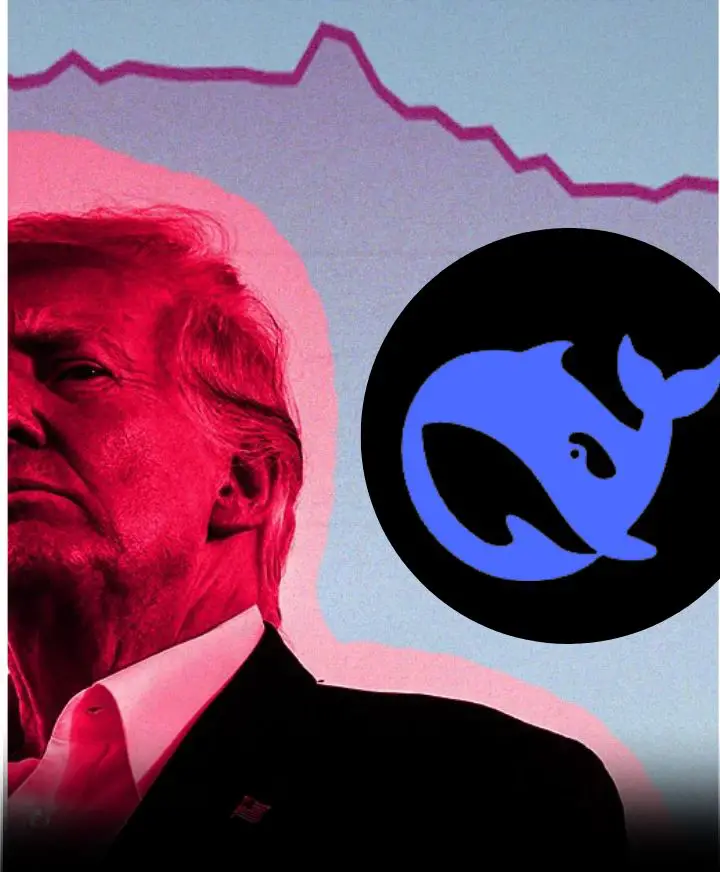Trump Sounds the Alarm: China’s DeepSeek AI Threatens U.S. Tech Supremacy!
The global AI landscape is undergoing a transformation as China’s AI startup DeepSeek emerges as a significant competitor to U.S. tech giants. Speaking from Miami, former President Donald Trump emphasized that DeepSeek’s advancements are a wake-up call for U.S. industries to innovate aggressively.
“The release of DeepSeek AI from a Chinese company should be a wakeup call for our industries that we need to be laser-focused on competing to win,” Trump said on Monday.
DeepSeek’s AI model, R1, has created ripples by outperforming established models, including some from OpenAI, while offering services at a fraction of the cost. This disruption has sparked concerns about China’s rapid progress in the global AI race.

What is DeepSeek?
Founded by the hedge fund High Flyer less than two years ago, DeepSeek focuses on creating Artificial General Intelligence (AGI). Its breakthrough AI model, R1, trained at a cost of just $6 million, matches the performance of OpenAI’s o1 model, which required billions in investment.
DeepSeek has also turned heads with its pricing strategy. While OpenAI charges $60 per million tokens, DeepSeek offers the same service for $2.19 per million tokens—a cost reduction of 95%.
This affordability has sent shockwaves through financial markets. Investors sold off shares of Nvidia and other U.S. tech companies over fears that low-cost competition from China could undermine their dominance.
“While [DeepSeek R1] is good news for users and the global economy, it is bad news for U.S. tech stocks,” said Luca Paolini, Chief Strategist at Pictet Asset Management.
The Alarm Bells in the U.S.
Trump expressed cautious optimism, urging U.S. companies to capitalize on the lessons from DeepSeek’s success.
“I’ve been reading about China… one company in particular coming up with a faster and much less expensive method. That’s good because you don’t have to spend as much money,” Trump said. “I view that as a positive because you’ll be doing that too, so you won’t be spending as much, and you’ll get the same result, hopefully.”
However, the rise of DeepSeek presents a significant challenge. Companies like Meta have already set up “war rooms” to analyze DeepSeek’s methods and apply those insights to their own AI development.
The Controversy Surrounding DeepSeek
While DeepSeek’s rapid ascent is impressive, it has not been without controversy. Its CEO, Liang Wenfeng, claims the company is resource-constrained due to U.S. export restrictions on advanced chips.
“DeepSeek only has access to a few thousand GPUs, and yet they’re pulling this off. Bans on shipments of advanced chips are the problem,” Liang stated.
However, industry insiders argue that DeepSeek might secretly have access to top-tier GPUs like Nvidia’s H100, which would enable such advanced developments despite export bans.
DeepSeek’s success also highlights the limits of China’s restrictive policies. For example, R1 refuses to answer politically sensitive questions, such as inquiries about the Tiananmen Square massacre. When queried, the model responded, “Sorry, that’s beyond my current scope. Let’s talk about something else.”
Implications for U.S. Tech Supremacy
DeepSeek’s rise raises questions about the effectiveness of U.S. strategies to constrain China’s AI ecosystem. Despite export restrictions, China has demonstrated an ability to innovate and compete on the global stage.
Trump, however, remained optimistic about American innovation. “We always have the ideas. We’re always first. So I would say that’s a positive… Instead of spending billions and billions, you’ll spend less, and you’ll come up with, hopefully, the same solution,” he said.
Meanwhile, the U.S. is stepping up its efforts. Trump recently announced a $500 billion venture to strengthen America’s AI infrastructure, ensuring the country remains at the forefront of AI innovation.
The Road Ahead
DeepSeek’s disruptive performance has forced U.S. tech giants like OpenAI, Meta, and Google to reconsider their strategies. The cost-efficiency of DeepSeek’s models has created an urgency for American firms to innovate while maintaining profitability.
As the global AI race intensifies, one question looms: Can the U.S. maintain its tech supremacy, or is China poised to redefine the industry?














